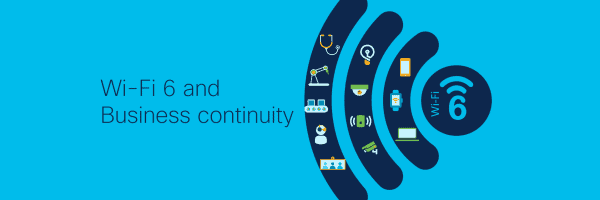
The Ever-growing Role of Wi-Fi 6 in Business Continuity
4th June 2020
Over the past couple of months, we have all been experiencing at least one of these new life-style changes: teleworking, telemedicine, virtual or e-learning education, and many more. These new terminologies—once unknown—have become household names for many people in record time.
As of today, no one knows for sure what changes tomorrow might bring after the pandemic, but one thing that everybody agrees on is that a lot of these new lifestyle’s changes are going to stay with us beyond this period.
For sure, one thing is certain: almost any organisation will need new ways of operating their business. The key components of the “new normal” of many business operations are digitisation, automation, and security. With these components organisations across all sectors, from retail to healthcare to manufacturing, will have the needed flexibility and mobility to scale easily and handle business continuity, even during emergency lock down.
We’re already starting to see some examples of these changes in operations: contactless transactions, smart way-finding and trace tracking, in-app services, mobile and virtual check-ins and outs, virtual training and events, digital collaborations (whiteboards, video conferencing), virtual show rooms, immersive product catalogues, and countless others.
The role of Wi-Fi 6
As businesses accelerate to a digitised and automated future, WiFi especially WiFi 6 plays a critical role in that journey. Digital transformation is not a ‘nice to have’ option anymore.
And, as organisations rely more heavily on mobile and IoT devices for their operations and automation, their Wi-Fi network must be able to support more devices and “things” connected to them reliably.
Wi-Fi 6 is the best suited to meet not only the demands of today’s wireless network, but the demand of emerging mobility use cases, such as immersive experience and high bandwidth applications.

